I had some bananas that were going bad, so I decided to make banana bread this morning before everyone else got out of bed. The problem arose when I ran out of bagged flour, so I decided to get into our long term food storage flour.
And if I’m being honest, we haven’t touched any of our bulk canned foods in years. It’s so easy to be lazy! Regardless, I figured this would be an interesting opportunity to find out if our stored flour was any good.
I grabbed this one off the shelf, probably one of the older cans:
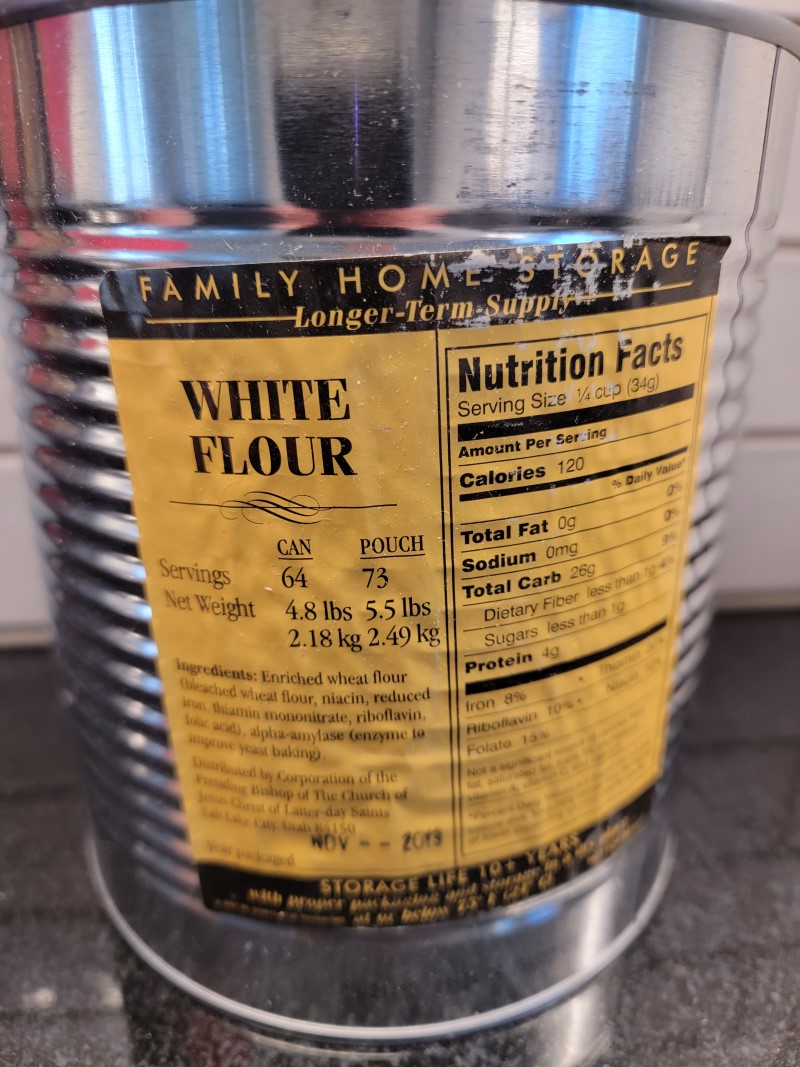
The date might be difficult to read, but it says it was packed on November 2013, which means we must have canned it ourselves at the local LDS Home Storage Center. That was back when you had to can bulk food at the church canneries yourself; these days it’s already done, which is great!
But, because the can of flour was nearly ten years old–and because I couldn’t quite remember–I wondered how long canned flour should be good for, so I looked it up and the church’s website says up to ten years. Again, I figured that since nine is less than ten, then the flour should be fine. Right?
I opened the can and it looked good:
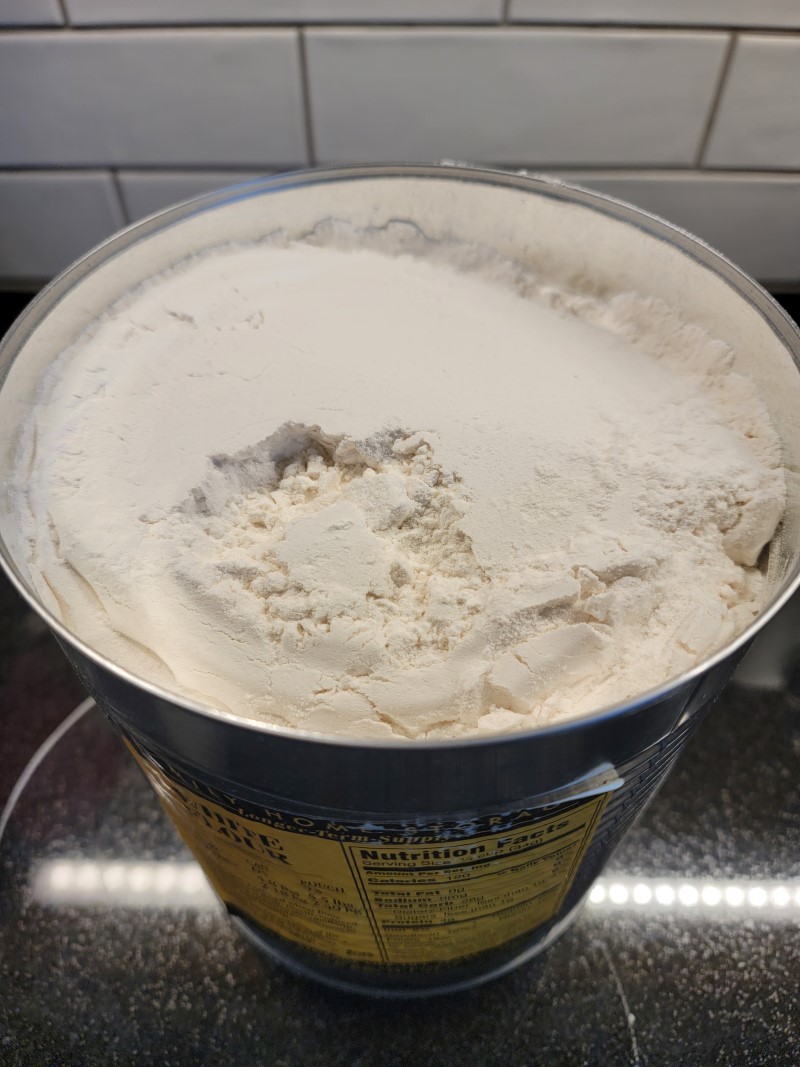
But I immediate noticed an off smell. It didn’t necessarily smell rancid, which they say smells “must or sour”, but metallic; it tasted funny, too. I wondered if this was a one-off problem, so I opened another can from the same timeframe and it smelled and tasted the exact same.
It was then when I noticed that there didn’t appear to be any sort of coating on the inside of the cans, like normal grocery store canned foods always have. And, because it has been so long since I’d gotten into our bulk cans, I couldn’t remember if it was normal or not for LDS Home Storage Center cans to not have inner coatings or appear to be bare metal. I couldn’t find an answer online, so I assumed it’s normal, but I don’t ever recall having the metallic smell/taste in any of our other bulk foods.
My guess is that flour tends to more readily absorb the metallic scent over years of being in storage more than other bulk foods, and that if worse came to worse the flour was probably fine to use, but my wife and I chose not to risk it and, so, I tossed the two cans I opened.
Our of curiosity, however, I found more #10 cans of flour, this time from a different batch, but there weren’t any dates on the label or can itself, so I have no idea when this was packed, lol:
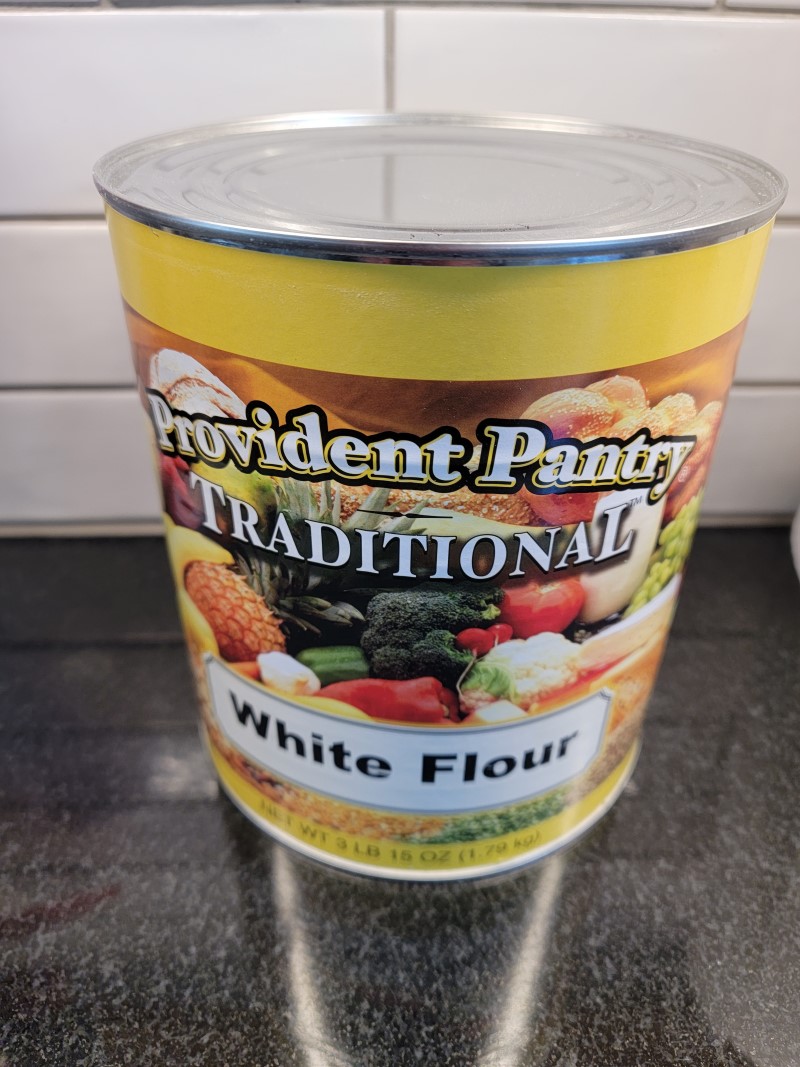
By the label, this flour must have been purchased online at some point. (Good job, me, for not keeping track of such things!)
Here’s what it looked like when opened:
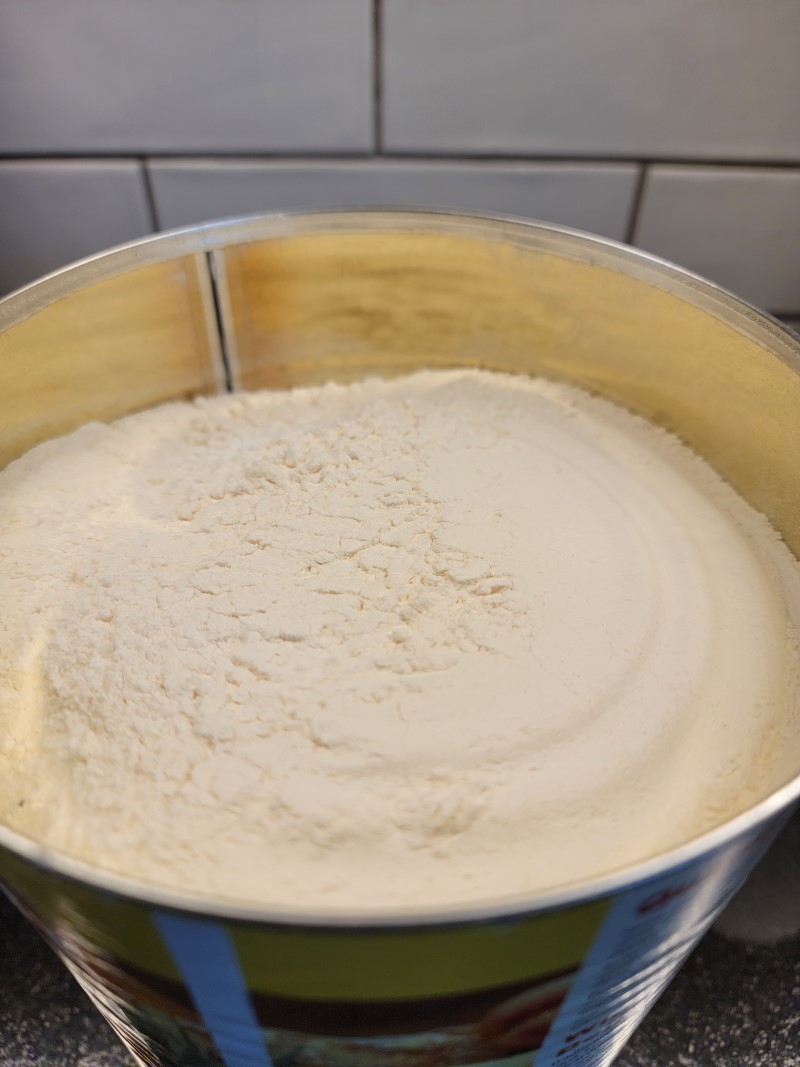
Again, it looked fine. Interestingly, this can did have a different coating (I believe its enamel) on the inside like you would expect, but it also smelled a tad off, though not nearly as obvious as the previous two cans of flour. This stuff, however, didn’t taste off at all, so I figure it must be a newer batch.
Now, sadly, I’m beginning to wonder about the other bulk foods I have sitting in our food storage, especially the rest of the flour. Fortunately, we don’t have much canned flour at all, choosing instead to grind wheat, which tends to last far longer.
Oh, well. Another less learned…don’t expect my never-used bulk foods to last forever. 🙂
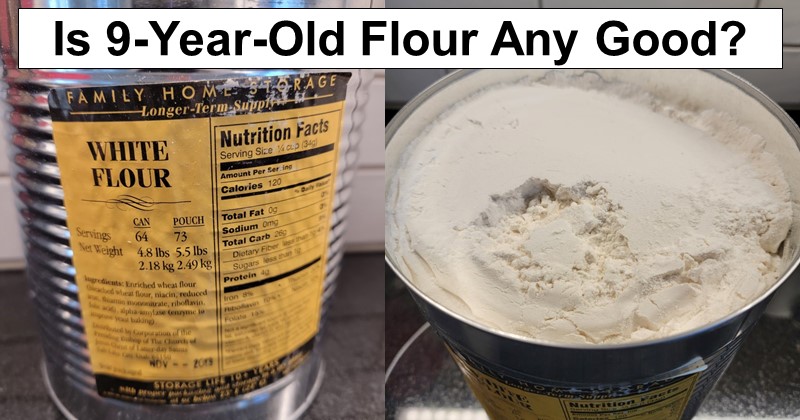
Leave a Reply